Occasionally in a game I’ll look up and I’ll notice the clouds. I’ll be shooting someone, or collecting something, or just walking over the crest of a hill as I follow a waypoint marker, and my gaze will drift upwards, entirely unmotivated, and-
-And suddenly I’ll see the huge bowl of the sky overhead. Maybe there will be thunderheads, those towering stormclouds that turn to anvils at their summits, lurking on the horizon. Maybe there will be a lacy veil of high atmosphere clouds dithering away to an iridescent nothing. Whatever’s there, it’s always a moment to stop and to marvel. It’s an intrinsic pleasure, pure unnatural natural beauty, suspended above a landscape that sometimes foregrounds extrinsic pleasures: map icons, quest-givers, the kind of loot that comes in treasure chests.
Then what? Then I’ll move on, caught up once more in the map, the quest, the endless hunt for treasure, and I’ll forget what I saw in the sky.
And I do something like this everyday. A lot of us do. Testify: “If a glorious sunset of Altocumulus clouds were to spread across the heavens only once in a generation, it would surely be amongst the principle legends of our time.” That’s Gavin Pretor-Pinney, the founder of the Cloud Appreciation Society, writing in his book, The Cloudspotter’s Guide. Altocumulus, despite the solid, bunched-up name, are those high clouds that form in scattering wheat fields across the mid-level of the sky, a perfect vehicle for absorbing the stains of woozy evening sunlight. “Yet most people,” Pretor-Pinney continues, “barely seem to notice the clouds…” So much drama up there, and somehow we see it and move on, head down, stumbling towards Tesco for a meal deal. Floating canyons, roving scouts made of nothing more than moisture. A whole world of beauty, and it irises out in our peripheral vision.
Anyway. A few months ago I re-read The Cloudspotter’s Guide, which was originally published in 2006, and I decided to become more attentive to the clouds. I went for long, meaningful walks and imagined myself tiny under the sky. I would break off mid-sentence, often while talking about where to go to lunch, to set my cold eyes on the horizon line where I would watch the slow, noble passage of Stratocumulus as if I was watching old friends go off to war. This annoyed almost everyone, but I didn’t mind. I was hooked, hooked on clouds, hooked on the cloud word horde, which is rich and deep: Cirrus, Nimbostratus, Cumulonimbus. And since I play a lot of games, I started to look up more from those virtual playgrounds to see what someone had laid out in the sky above me.
Clouds in games seemed particularly interesting, in fact. Here was nature entirely manufactured and yet entirely convincing. Here was beauty and drama that someone had created in the awareness, surely, that, while it needed to be there, it would largely go unnoticed. Video game clouds seemed to sum up something that’s crucial to our experience of clouds in the wider world in this regard. If the clouds weren’t there, we’d feel their gaping absence. But when they are there, we struggle to see them. I wanted to know more about all this stuff. I wanted to know about clouds, and why they should bewitch us. And I wanted to know if all the skies I’d been looking at in games made sense. So, following the impulse of every good cloudspotter, I went straight to the top.
Pretor-Pinney founded the Cloud Appreciation Society in 2005, so it’s just shy of its 20th birthday. Today, the society has over 60,000 members across 120 countries, and is responsible for, amongst other things, adding Asperitas clouds to the World Meteorological Society’s International Cloud Atlas. Pretor-Pinney often makes it sound as if the founding of the society was a bit of a lark. Elsewhere in his career he co-founded the Idler magazine, and imported absinthe before absinthe was cool – or rather, in the long hollow between the two periods in which absinthe was cool. Last month, I got up very early and, under what I carefully noted were uniformly grey and unexciting skies, I got on the train and went to see him for the day, taking with me a bunch of screenshots of video games and their various skyscapes. I wanted the official verdict. But I also wanted something more, something I couldn’t really put a name to.
Listen: The Cloud Appreciation Society’s office at Pretor-Pinney’s home is basically perfect. It’s one of those lovely baggy kind of rooms you feel you could just sink into. Bookshelves line several walls, and, as ever, it’s hard not to read too much into what they contain. I was delighted to see London Fields, with its broken, radioactive weather, sat alongside a stack of Kendall Mint Cake and Dead Souls, a novel that pretty much exists under low skies the colour of mud. Elsewhere, Secret Knowledge, a book about looking twice and noticing what nobody else has spotted, sat near a lovely old hardback copy of Song of the Sky: An exploration of the ocean of the air, by Guy Murchie. Pretor-Pinney suggested to me that this was the kind of book that, once encountered, was hard to entirely recover from.
On balance, I would say that the books were roughly divided between art and science, which makes sense. It makes sense because Pretor-Pinney started a degree in physics before pivoting to philosophy – and eventually graphic design. And it makes sense because of something Pretor-Pinney tells me about clouds and how to talk about them.
“Science and art have to go hand in hand when I’m talking to people about the sky, when I’m enthusing about the sky,” Pretor-Pinney says. “Because if it’s just the science, it becomes dry. And that’s, of course, the last thing you want from a cloud. But if it is just about the art and the emotion, it becomes untethered. And it becomes out of your psychological grasp. It just wafts off into the air.” As he says this, his eyes are drawn to one of the few works of art in the office, a huge print of a manicule, or pointing finger. These were originally employed for notes in the margins of books. Here, the hand fills a wall and the finger is directed, of course, at the heavens.
So, art and science combined. Or, to use another of the possible names for that: video games. And where better to start than with someone who actually rides a cloud?
The paradox of a cloud
Lakitus have been riding in plump little clouds since 1985, when they first appeared in Super Mario Bros., where they are described in the manual as “the mysterious turtle that controls the clouds.” But what kind of clouds?

I set up my laptop with all the pictures of clouds in games I’ve brought to show Pretor-Pinney. Apologies in advance here: your favourite is probably not included in my somewhat wayward list and I take the blame for that. Anyway, Pretor-Pinney squints a bit at Lakitu on their cloud. “This is a Cumulus cloud,” he says, before leaning in. “Interestingly, it’s missing a couple of important elements. It should really have a flatter base than that.” He laughs. “I’m gonna be very critical about this if you’re not careful.”
A flatter base? Like the Simpsons cloud? Pretor-Pinney nods. “That’s a classic. So the Simpsons sky is the fair-weather Cumulus cloud, also known more specifically as a Cumulus humilis: little, diminutive, humble.” Pretor-Pinney has a voice that grows sing-song-like when he gets excited, and he tends to stretch out long words luxuriously, articulating their individual syllables, partly for education, partly for the sheer pleasure of it: Cu-mu-lus. Hu-mi-lis. Di-min-u-tive.
The Cumulus has a flat base, he tells me, because they form on thermals, those invisible columns of air that rise off the sun-warmed ground. As the air rises, it expands, and as any gas expands, it also cools. The moisture this air is lifting up may, at a certain point, cool enough to change from a gas to a liquid: droplets. “But it’s a certain temperature when that phase change happens,” Pretor-Pinney explains. “So you get a base. And then on top of that, you see what was once an invisible column of rising air bubbling up and now becoming a visible one. The droplets are in that type of air. And they’re surrounded by the ambient air around, which doesn’t have droplets in it.”
He pauses and sits back and stares at Lakitu, riding air that other air has rendered sharply visible. “Of course, he would not be able to be sitting on that cloud.”
He wouldn’t, but we’ve all thought of doing that, right? Children think about walking on clouds, singers sing about it. Poets. Painters. Don’t we all do that?
“Exactly!” says Pretor-Pinney. “And this is the paradox. The paradox of a cloud is it looks like a thing, especially a Cumulus cloud. It looks like a thing! But it’s not a thing. It’s a collection of tiny, tiny things. It’s an array, it is a distribution of miniscule droplets. In the case of a Cumulus, they’re so small, they’re like specks of dust easily wafted in the air. And so they stay up. But if you were to have all that water in one solid thing, it would fall down very quickly.”
How quickly? Pretor-Pinney actually talks about this in his book. He talks about the weight of clouds, even Cumulus, the fluffy little fellows kids like to draw. This sounds completely ridiculous. But it’s not. Clouds have weight – they do in thought experiments, anyway – and they’re often heavy.
“So mediocris, which is a middle-sized Cumulus, if you were to take all those droplets in a mediocris, and not add them as individual specks of dust-sized things, but bring them all together, then?” Pretor-Pinney laughs. “80 elephants is the weight that I give as a rough estimate of the weight of that water. And it’s very surprising, it’s part of the paradoxical nature of of these phenomena. You think: wait a second, 80 elephants? How’s it staying up in the sky? And you know, then you think, okay, 80 elephants, but they’re tiny droplets? And actually, that moisture is there in the air anyway. It’s just in the air in the form of a gas. It’s only when you bring it together into droplets that you see it. And then if you invent this idea of squashing all those droplets together, then yes, it becomes weighty.”
In other words, thank you Lakitu, because a Cumulus is the perfect introduction to clouds. It’s the cloud drawn by children, and it allows us to explore what’s unusual, contradictory, slightly mind-bending about clouds in general. “Yes, exactly,” agrees Pretor-Pinney. “And the challenges in representing them.” He points at the screen. “There’s something comical about that cloud, and there’s something light-hearted. I always say the Cumulus cloud, the Simpsons sky, it’s the most light-hearted cloud. Nobody hates Cumulus. They improve your day, they are the best for finding shapes in, because they have these crisp edges to them. And those crisp edges are a result of this artificial introduction of air, from this rising thermal. It comes rising up and pushes out this different type of air up here, which is drier. And it shoves it out the way and you get these very different types of air with a crisp division, a crisp boundary, a crisp edge.”
The next cloud I show Pretor-Pinney is also a Cumulus, and it’s also a Mario Cumulus. But whereas the picture of Lakitu I brought with me is from a recent 3D Mario game, we’re now back at the very start of things. Super Mario Bros. 1-1. The most famous tutorial in all of games, and behind the main action, quietly fixed in the sky?

Pretor-Pinney lights up. “Yes, we’ve got an 8-bit display there,” he says. “But it’s actually a bit more of a representative cloud this time. It’s got a spiky top, and you’ve got a difference in shape between base and summit.” So even though we’ve gone back in time, back almost to the birth of modern games, this is a more accurate Cumulus? “Yes!” Pretor-Pinney says. “You may be dealing with your 8-bit graphics, but they put more effort here into the cloud. This Cumulus has a shadow to his base. Having a shaded underside to a Cumulus cloud is another of its defining visual characteristics. It’s because that density, that optical density of it looking solid on account of having lots of tiny particles, each of which scatter the sunlight, and therefore stop so much of the sunlight shining through, results in a shaded underside to the cloud.
“And so you’re ticking three boxes here, really.” He counts off on his fingers. “You’ve got the flattish base. You’ve got a shaded underside. And you’ve got a top that is reminiscent of cauliflowers mounds. It’s the visual manifestation of that rising convection column.”
This is fascinating to me. And it makes me wonder: back in 1985, is it fair to say that this earlier Cumulus is a response to an act of seeing, of noticing a cloud and what it’s like, a process that was no longer involved by the time 3D Lakitu comes along? Is this noticing versus memory? “Yeah, you don’t get that by accident,” says Pretor-Pinney. “I think they would have had to look.”
It turns out that this is something Pretor-Pinney has thought about a lot. The act of seeing, of noticing. It’s a scarlet thread that runs through his book, through the society, and through our conversation about games. “As an example, I’m always interested to come across artists who are cloud spotters,” he tells me. “Cloud-spotting artists is a game I like to play when you’re walking around the gallery. You see a painting and you go: Is this a crap cartoon cloud, or have they actually rendered something by paying attention to what’s happening in the sky?”
So who’s paying attention? Constable is. The Hay Wain Constable. Hiding-Turner’s-painting-in-a-closet Constable. “Yeah, he’s paying attention,” Pretor-Pinney laughs. “Okay, possibly too much attention.”
Too much attention? It comes down to a matter of intent. Pretor-Pinney explains that Constable didn’t just paint cloud studies, he also wrote extensive notes on the back of the images, capturing the weather conditions in fine detail. “When Constable did his cloud studies in 1820 to ’22, he basically focused solely on sketches of the sky because he really wanted to perfect his skies,” he tells me. “And he banged out these cloud studies, none of them intended for exhibition: small square canvases that he’d take out and do out in the open on Hampstead Heath, looking out across the skyscape of London and out across the countryside. And he would do these fast sketches, writing down the conditions. And it was all an analytical process.
“Now, his chocolate-box landscape paintings are not very popular as a style today,” Pretor-Pinney continues, and somewhere, in a small village in Sussex, I hear my mother screaming in fury. “But his cloud studies are. I mean, that’s really when you see his genius, because that was like loose Impressionist work, it was like a sort of precursor to Impressionistic styles of painting.”
Constable was so interested in clouds that he followed Luke Howard, a Quaker in London who lived in Tottenham and came up with the initial idea of using the Linnaean system for describing the clouds. “He said, “We do it for plants and animals. Maybe we could do it for clouds”, you know? Radical idea, captured everyone’s imaginations. Constable was aware of that.”
But Constable wasn’t the only painter thinking about clouds. Working at the same time as Constable was Turner, another Romantic painter, but one who was focused much more on clouds and weather as vast dramatic forces: tumult and chaos on a huge scale. Clouds in Turner paintings mass and flood the sky with light and darkness. They frequently spiral across space: into the sea, into the mountains, into the earth. They churn. And Turner has his modern equivalent in video games.
After Mario 1-1, my next sky image takes us forward about thirty-odd years. It’s Bungie, and it’s Destiny. Games are now gigantic undertakings that cost millions and employ hundreds of artists and designers. And skies are no longer simple sprites arranged behind the moving 2D character, but skyboxes. That term: say it aloud. So magical in its weird, blunt utilitarianism: a box to hold the sky. And nobody’s boxes hold the sky better than Bungie’s.
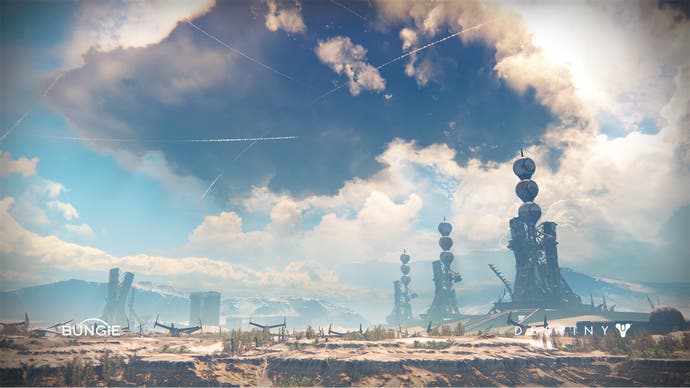
Bungie’s skyboxes are Romantic in the same way Turner is Romantic. The weather here brings drama and emotion, and provides a vast slow-shifting counterpoint to the busy-ness and laser-scoped focus of the humans toiling beneath it. But does it all make sense as a sky? Is it Turner through and through, or is Constable present as well?
“Yes, I mean, there is some sense here,” says Pretor-Pinney, taking the image from Destiny in. “To me, just looking at this as a kind of cloud spotter, there’s a sense to the elements here. But not necessarily how they’ve been combined together.”
The problem lies with the cloud that dominates the sky: the cloud with the wide, dark base. “A cloud with a dark base like this is something you do see,” Pretor-Pinney says. “It’s the dark base of a tall, tall cloud. When a cloud is tall, its base is dark, and that’s why we know a cloud’s about to rain. Because there’s a relationship between the tallness of a cloud and its likelihood to rain. It means there’s so much cloud for any light to get through, so hardly any emerges from the base of the cloud and it seems darker. And the reason it’s likely to produce a shower is because the higher the top of that cloud is, the more likely the droplets up there will freeze. And generally speaking, that’s the beginning of the precipitation.”
That’s all fine. But Bungie’s monster rain cloud is simply too high off the ground for a cloud with that kind of base. Pretor-Pinney points to the other clouds in the image, the lighter clouds that seem to cling to the horizon. “I mean, you’ve got here Stratocumulus clouds. They’re like, if you were to take Cumulus clouds, and mess them together, you get a solid layer with a kind of chaotic feel to it. So if we didn’t have that dark thing there, I would go: very common, realistic sky here. It’s scrappy Stratocumulus, because it’s near the ground, and all those elements of cloud have been messed up by things like thermals, things like winds blowing over mountains, like we have off here in the distance, things like, you know, breezes interacting with with buildings like we have here. That all causes chaotic turbulence.
“So that’s fine. But that the positioning of this one here, this dark patch, looks to me… I know it’s in the foreground, but it still feels much more elevated than those are. It feels very wrong to me.”
Wrong, but Turner-wrong? This particular shot from Destiny actually reminds me of Turner’s painting Snow Storm: Hannibal and his Army Crossing the Alps. The weather as sheer visual impact.
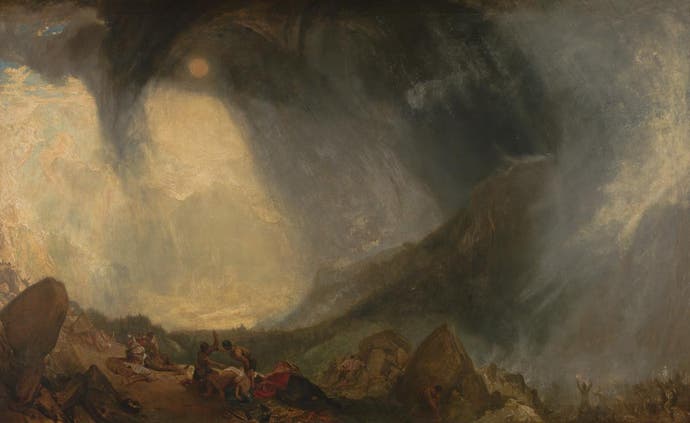
“Very similar,” agrees Pretor-Pinney. “They got all the right bits, just not put together in the right way.” And why is that? “They’re searching for drama,” he nods. “And certainly, inherent in our elemental understanding of the sky is: dark sky means drama.”
The best view from the office window
I took a lot of video game clouds to my meeting with Pretor-Pinney, and while he isn’t impressed with all of them from a cloud-spotting perspective, they all have something in them that sparks his imagination. Wind-Waker’s clouds may not have satisfied him very much, but they move him to consider the circumstances of their creation: “It looks like doing something blurry in a moving environment was not so easy when this game was made.” Minecraft’s clouds mainly make him think about ways that the developers could represent their clouds differently in the future. “I’m gonna say these are Altocumulus and not Cirrus,” he decides at length. “I just think, with Cirrus, you can never kind of really represents Cirrus in a cubist way. It’s because Cirrus is, by its essence, edgeless. It’s fluid strokes. So I would love to see the Minecraft designers attempt a Cirrus. It’d be fascinating. They must have glass in the game? So if they want a tip from me: don’t make a solid cloud, because ice crystals are less plentiful and larger here, so you get this translucent effect. Frosted glass would be the elements they’re working with.”
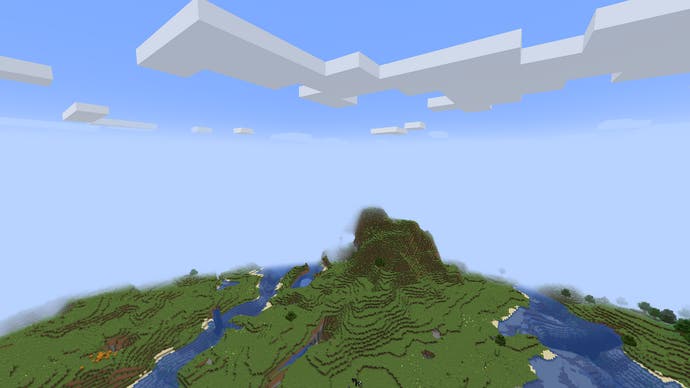

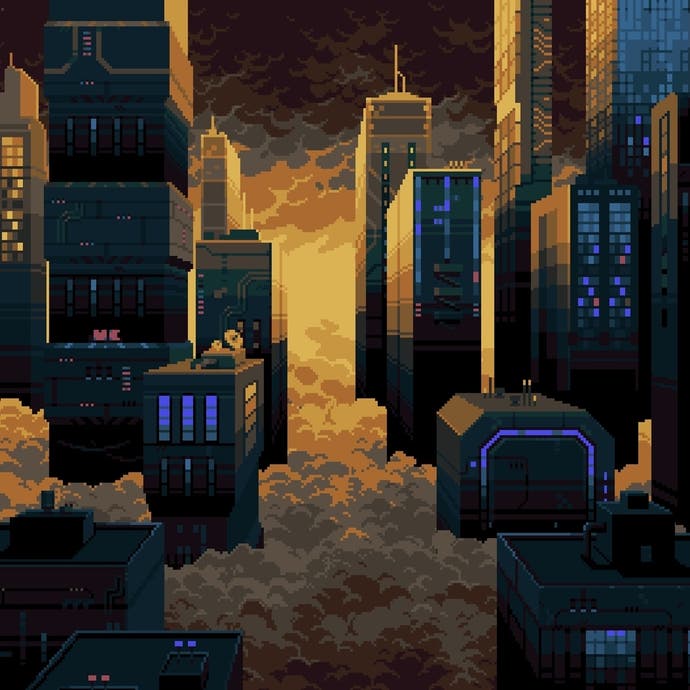
Elsewhere, Disjunction’s cloud-locked city makes him ponder the gaps between cloud layers that people on the ground rarely get to see. “We don’t genuinely see that much of that, because the low clouds tend to obscure what’s going on above. And it’s something that pilots are fully aware of.
“And in fact,” he continues, “we’ve got lots of pilot members of the Cloud Appreciation Society, and there are certain cloud formations that they quite enjoy. They obviously love the beauty of being able to see the cloudscape. They have the best view from the office window of any profession really. But they also enjoy when they have to take control because there are lots of thunderheads around, and they have to navigate through the clear air spaces around these Cumulus clouds in order to come into land. They can’t just avoid the whole thing. They will be definitely fully aware of the these kind of spaces between cloudforms.”
He looks at Disjunction again. An appraising light in the eyes. “So: cloud layer below, cloud layer above. That’s kind of what we’ve got going on here. Do you think, I mean, do you think that brightness in the distance is clearer air?” Probably!

Elsewhere, one of my favourite games of all time does surprisingly well. Crackdown, powered by the venerable RenderWare engine, offers a decent sunset – a time of day which Pretor-Pinney says is often the best time for cloud spotting.
“Altocumulus clouds are individual elements of clouds, we call them cloudlets,” he explains, “and they each have this kind of solid appearance to them, like the low Cumulus clouds we saw before, like Stratocumulus, which are more joined into a layer. Altocumulus have that solid appearance, but they tend to be arranged in a bit more of an orderly fashion. So you get the sense that something has spread out across the sky here, this kind of pattern, this tiled effect, often. And also, they’re not as high as a Cirrocumulus equivalent cloudscape, which means that, being mid-level, they can still dominate the sky.
“And I feel like they’ve done pretty well here,” he says. “A little bit too dark? I mean, you’ve got the darkness of the cloud, which is indicative of this being a droplet cloud. So mid-level Altocumulus clouds are made of droplets, supercooled droplets, far colder than we would expect a droplet to stay like liquid – maybe minus-20 degrees Celsius. And they’re just desperate to freeze, but it takes getting really quite cold before they do. But this is made of droplets still. And so that means it’s got a solid appearance. So when the sun is on the far side it’s going to have a shaded side facing you. So they got that right. And also, you’ve got the sunlight shining through the edges, which is exactly right. So you have this silver lining or golden lining to the cloud. That’s realistic. And you’ve got slight extra colouration around there. The sort of golden colours, you might even have some pinks coming in. That’s all realistic, as the sunlight is diffracted, passing around a tiny droplets around the fringes of these clouds. And everyone says, you know, clouds have a silver lining. Often they actually have a multi-coloured lining.”
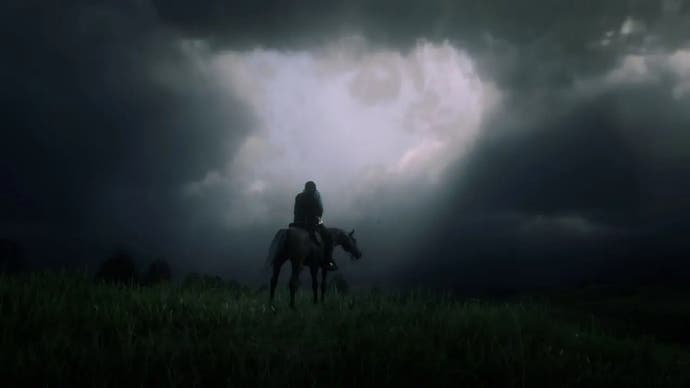
Red Dead Redemption 2 also gets a thumbs-up, unsurprisingly for a game whose weather caused some players to become dedicated storm chasers. “Ahhh! Moody!” Pretor-Pinney exclaims when I show him the image. “I mean, that looks very atmospheric, in all senses of the word. It looks very realistic. A storm chase environment will result in dark bits of sky, the base of an enormous storm system, and bright patches, because these Cumulonimbus clouds, which are the ones that produce storms, often happen in isolated cells. They started off maybe as a little Cumulus that got bigger and bigger. And then you’ve got this dark cloud and then a gap, right? You’ve got all kinds of cloud shit going on, mixing things up.”
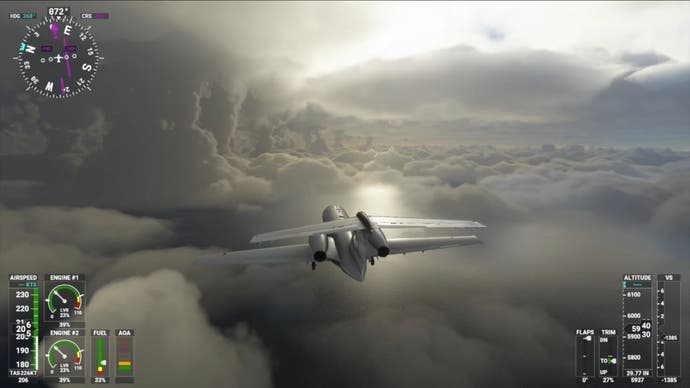
Speaking of cloud shit, a shot from Microsoft Flight Sim, of a flight over a Caribbean storm system with Matt Wales in the cockpit, also gets cautious approval. “Full cloud action!” Pretor-Pinney says. “So we’ve got some ocean shining through with. Again, we’re in a gap in-between cloud formations. It looks realistic to me. We’ve got off to the left there rising towers of cloud, kind of spreading out.
“It’s pretty good.”
Without knowing the altitude of that dragon
It’s fun to hear Pretor-Pinney analyse the clouds in games. But it turns out that what’s more rewarding is when a game jogs a memory or sends him off on a discursive desire path of a thought that leads somewhere surprising. This is something I suspect clouds are very good at. From the various journeys he takes in his book, to any five minutes of conversation in his office, once clouds are introduced, you never know where you’re going to end up, and that’s magic.
 Ace Combat 7 is phenomenal in VR (if you have the stomach for it) – Ian’s VR Corner
Ace Combat 7 is phenomenal in VR (if you have the stomach for it) – Ian’s VR CornerTwo games are particularly good for this. Ace Combat VR, present in the form of a video clip supplied by Ian Higton, absolutely delights him. Ian had been struck by how travelling through a cloud lead to condensation on the cockpit window. Pretor-Pinney ponders the viability of that for a while – the droplets would gather, but would the jet’s movement shift them pretty quickly? – before falling into reverie on a truly luminous topic: the one time he touched a cloud.
“So I think the idea that you can fly through a cloud, and that the cloud has moisture to it is great. I can imagine when the first computer game started allow people to fly through the clouds in a realistic manner, that was a big step-change.
“And I remember doing that myself, you know: being up taken up in a two-person glider, the triangular one. It was for some TV programme, and we went up, me and the pilot, and we basically flew around, and went through a cloud.
“And I remember – I remember putting my hand out and just feeling my hand go through it. And you could get this sense – it was a Cumulus cloud, there’s that clear edge – inside it felt cold because the droplets against your hand evaporate and that makes your hand feel cold. So there was a sense of coldness and moisture in it. And of all the flying experiences I’ve had, that one just had the just the perfect mix of being able to really get a sense of the three-dimensional quality of the cloud and actually get in an intimate relationship with it.”

Horizon Forbidden West: Burning Shores, meanwhile, which I included because of Guerrilla’s volumetric cloud rendering, takes Pretor-Pinney back to a very early memory.
“So we’re looking now onto a cloudscape from above, and is this the first time we’re looking from above in one of these games? I remember the first time I flew through a cloud when I was going to America with my family. My mum’s from New York City, and we went to America when I was young.
“And it was the first time I’d been on a plane, obviously quite a big deal. I remember being in the window seat. And there we were in Heathrow, with the very dark grey underside of this cloud layer. Can’t remember if it was drizzly. But there’s there was that moment, which I’d never experienced, of emerging through the cloud layer into the bright sunshine, shining down onto this landscape of valleys and mountains made of cloud formations. That’s kind of what we’ve got here.”
And then we’re back. “I would say this,” he says, as he moves closer to the image. “It’s a little bit hard to work out without knowing the altitude of that dragon. But I would say probably Stratocumulus here, but possibly Stratocumulus in an unstable atmospheric situation, where some of these towers of Stratocumulus are building into sort of storm cells.”
Alongside the discursions into memory, there’s something else that we keep returning to – and which Pretor-Pinney returns to often in his book. When I re-read The Cloudspotter’s Guide earlier this year, now the parent of a ten-year-old, I was struck that this book about clouds is actually a book about childhood. When I put this to Pretor-Pinney, he says that he’s often been conscious about how clouds are nostalgic things for a lot of people. We notice the clouds most when we’re a child, he says, when most of our world is spent looking up at the world, and up at our parents.
But I think there’s something more to it. Something about the quality of noticing, of alertness that seems to come so easily to children, but that comes less easily in adulthood, or rather, which requires effort. This effort spent noticing keeps coming up in our conversation. And what are these games I’m showing Pretor-Pinney if not effort? Effort boiled down, decocted, and served up in a clear glass to be enjoyed.
As a case in point here. When I first opened my laptop, Pretor-Pinney was worried that we’d be mostly seeing two types of cloud, which I’m guessing were probably Cumulus and Stratocumulus. And we see lots of those, for sure. But we also see Altocumulus, Cumulonimbus in the storm clouds of Red Dead Redemption 2 and Flight Sim, alongside a perhaps wonky touch of Cirrus to Minecraft, and even some potential Asperitas in the upper sections of Disjunction. These games may not always get things right, but they’re often acts of looking, they’re all profound acts of noticing.
And this is never clearer than with the two final games I show Pretor-Pinney – none of which, to be honest, I had particularly high hopes for.

The first is Sable, recommended by Victoria Kennedy. I love Sable, but I worried that it was so in thrall to the spindle-sharp linework of European artists like Moebius that its clouds would be stylised companion pieces – artsy throw cushions chosen because they matched the sofa.
How wrong I was. “I would say we’ve got lenticularis clouds going on here,” says Pretor-Pinney when he sees the image. Lenticularis?! Really? Important note here: like any early cloud spotter, I am a major lenticularis fanboy.
“Well. I mean, that’s what if I were to see certainly those two…” He leans in more, tilts his head. “These off to the left here, possibly even the one up at the top? They seem pretty good representations of lenticularis clouds.”
My heart actually races a little. Lenticularis – or Altocumulus lenticularis, or plain Lenticular clouds – are those sculpted glass vases of the sky: the Lalique-minted flying saucers glimpsed on the horizon. The cloud as made object, the cloud as double-take. And they’re quite rare aren’t they?
“Well, not if you live in a mountainous region,” Pretor-Pinney says. “If you live in a non-mountainous region, they would form rarely, but over hills. Maybe low hills can cause them, only when conditions are right. In a mountainous region you don’t need conditions to be that right to get lenticularis clouds.” He looks at the image again. “We’ve got a bit of terrain here. What is this? A sand dune they’re walking on? You know, I’d like to know what what else was around in this terrain here, because I’m guessing we’ve got some raised terrain nearby.”
Yes, I tell him. It’s very mesa-like in Sable.
“Great. So you can have a mesa, like a high plateau, where there’s a sudden drop to a lower kind of desert dunes region. And that drop can cause lenticularis clouds. It doesn’t have to be a rise, because what’s important is you’ve got a stable atmospheric condition. That is the opposite to all those storm clouds we’ve seen. And when air is stable, by definition, it means that if you push a bit of it up, it comes back down. And that means when air is flowing along and hits an enormous obstacle like a mountain, or perhaps it comes to a cliff edge and goes down, either way, it’s getting displaced. With the mountain it has to go up over the mountain. And because we’re in stable conditions, it’s going to come back down, and it’ll overshoot and come back up.
“And then we’ve got a standing wave rising and dipping, because it’s trying to get back to his equilibrium state of stability. The same can happen coming off a mesa, and dipping down, it only wants to go back up. And that wave flow, a standing wave, can cause a disk-like, or sometimes lozenge-like, cloud to appear. Because at the crest of this invisible flowing wave of air, the air has expanded and cooled. And then if it’s got enough moisture in there, droplets can form and they rush through the cloud with the wind, until the air dips back down, warms a bit and they evaporate away again. So you’ve got this hovering cloud. These would hover in the air, they wouldn’t drift along in the air. All the droplets move through, but the cloud position says fixed in a steady wind relative to the mountain peak.”
Jeepers. So that’s a genuine lenticularis in Sable? “On the left, yes,” says Pretor-Pinney after a while.

My last video game cloud is from Monkey Island 3, an unfairly maligned game, I think, not that this is entirely relevant. What is relevant is Monkey Island 3’s clouds, though: huge expressive ribbons of cloud that curl through the sky. It felt like a good place to end things, because here’s the very idea of a cloud on the screen, the feel of a cloud, the emotional shape of it. But is it more than that too?
“I mean, I’m liking this,” says Pretor-Pinney. “I would be saying Fluctus cloud, I’d be shouting Fluctus cloud here. They’re also known, more tongue twistingly, as the Kelvin Helmholtz Wave cloud. But they needed a rebrand, and in 2017 it was rebranded as Fluctus when it got given a Latin classification. When the international Cloud Atlas was revised by the World Meteorological Organisation, a few lay terms for certain formations were inducted into the official Linnaean system. And this is one of them.”
Kelvin and Hemlholtz were both Victorian scientists studying fluid dynamics and turbulence, and the Fluctus is the result of turbulence – of the sheering wind effect where the top of a stable cloud can be picked off and curled over. “You see them in the clouds on Jupiter,” Pretor-Pinney tells me, his eyes radiant at the thought. “You can see them in the flow of plankton seen from above, from a satellite image in the oceans. You see these vortices in kind of adjacent but differing flows of fluids regularly in nature.
“The problem is they’ve almost got it right here, but they should curl down rather than up. Other than that, it’s Fluctus.”
I get the sense that Fluctus is something of a favourite for Pretor-Pinney. “They’re so fleeting,” he tells me. “Sometimes you just get one or two on top of a Cumulus. So this is a rare, fleeting cloud formation, the Fluctus.
“But funnily enough, sometimes the rarest things appear in the most every day of circumstances. You just have to be the person who notices them.”
I think of that sentence as I pack up my laptop and take one last look around the office of the Cloud Appreciation Society, with its art books, its science books, its Kendall Mint Cake, and a selection of patches that Pretor-Pinney has designed for the society’s various expeditions to spot clouds around the world, to find clouds and appreciate them.
You have to be the person who notices. When I ask Pretor-Pinney about the society itself, he says that what keeps it working is the people, the connections made between these people all over the world who love clouds, but also share a certain innate curiosity, a willingness to notice things. That’s a good attitude for life, I think, whether you care about the clouds or not. It’s a good attitude to carry into games, whether you make them or play them or just spend your life thinking about them. Look up. Clear your mind. What’s happening overhead?
Before Pretor-Pinney drives me back to the train station, after he’s made me some of his home-made bread – his newest fascination; it’s delicious – he signs my copy of The Cloudspotter’s Guide. I asked him to make it out to my daughter: a book about childhood is now going to belong to my own child.
On the train back, beneath louring skies with no clouds I can readily recognise – presumably it’s Nimbostratus, which Pretor-Pinney has told me is, “the kind of soggy, thick blanket cloud, the wet blanket of the sky that just covers everything and rains and rains and rains and everyone hates it, and it gives all the other clouds a bad name” – I look at what he’s written to my daughter.
He spent a long time thinking before he wrote anything. Now I see he’s eventually written: “If you learn to spot clouds, you’ll be able to find beauty in the everyday!”
If you’d like to join the Cloud Appreciation Society, you’ll find everything you need here.
